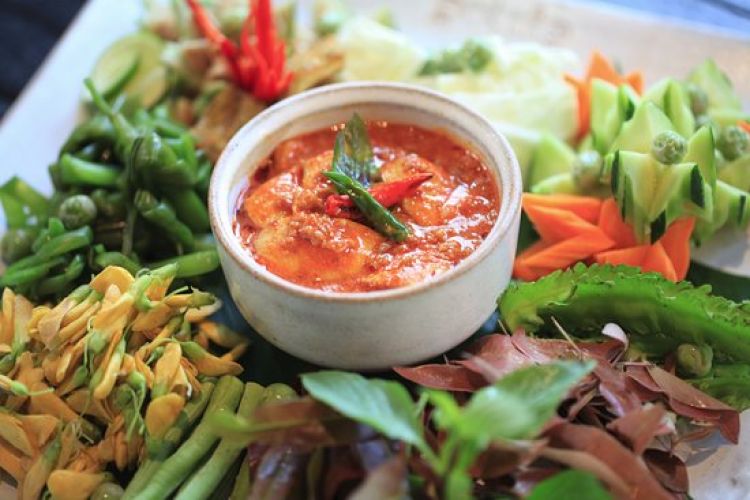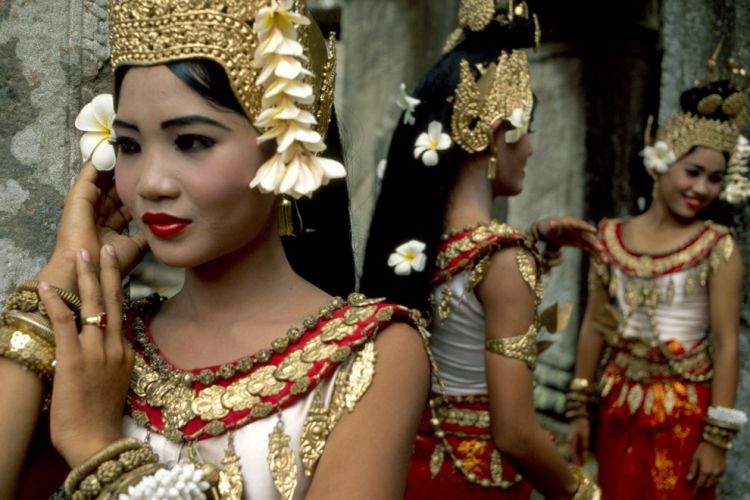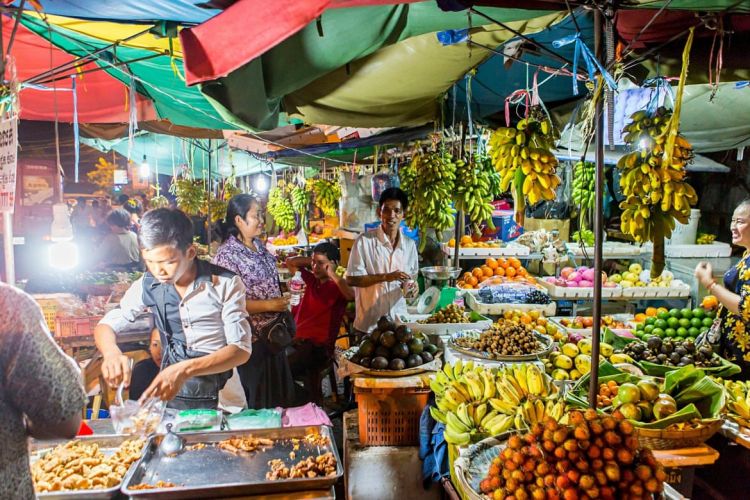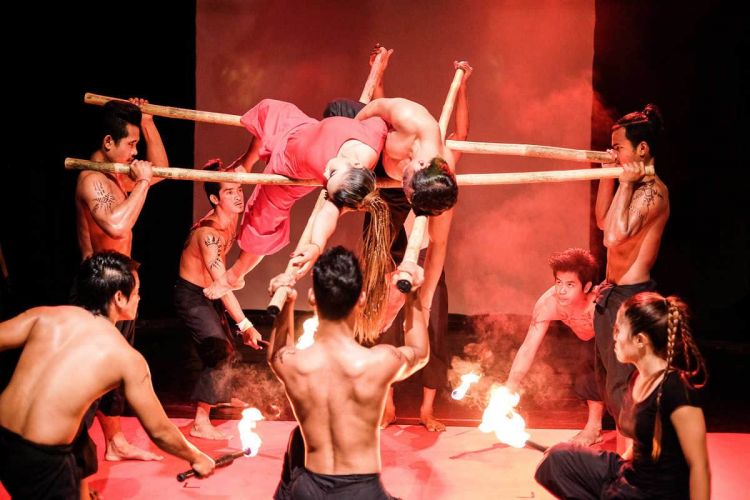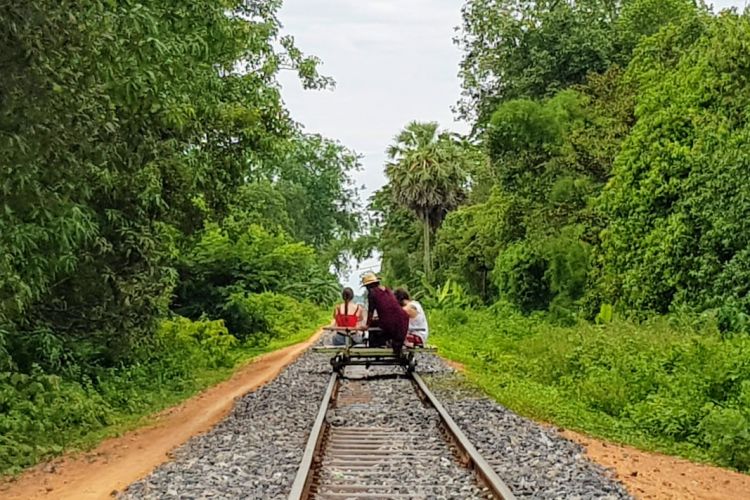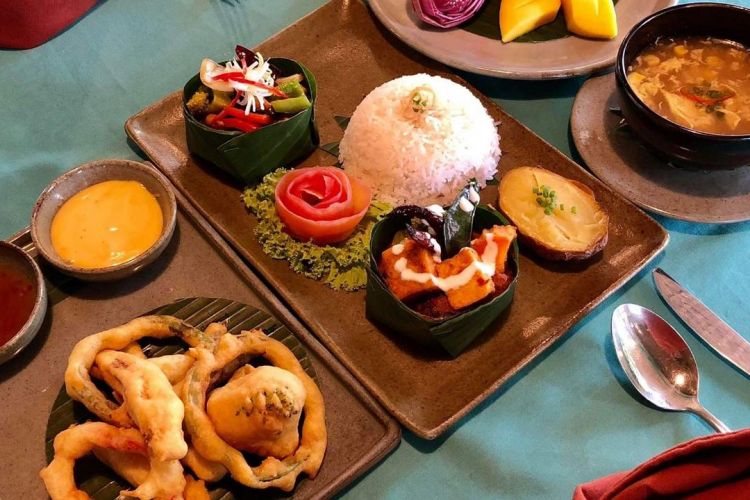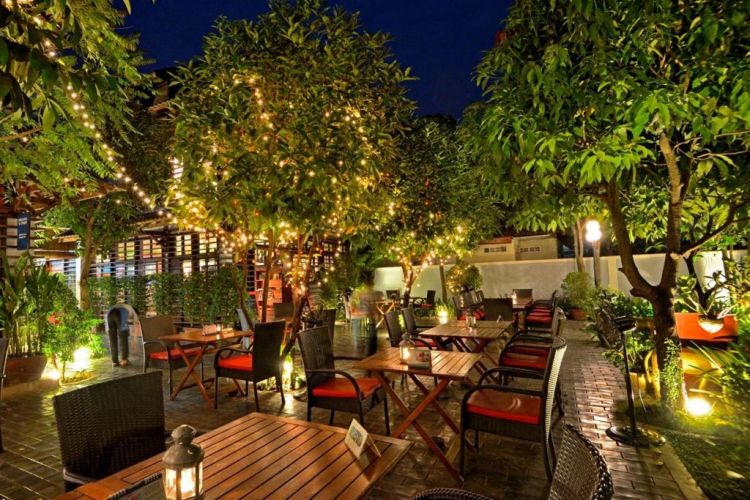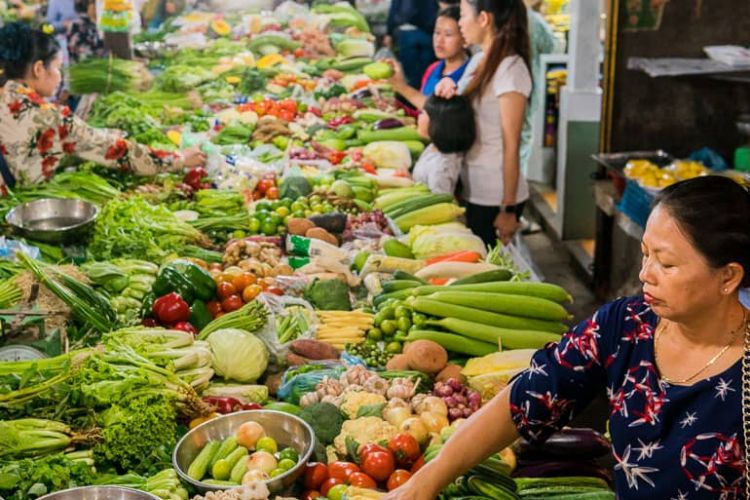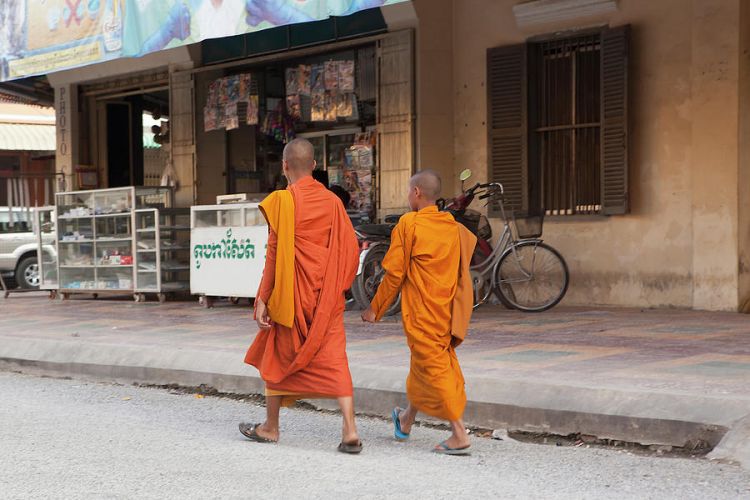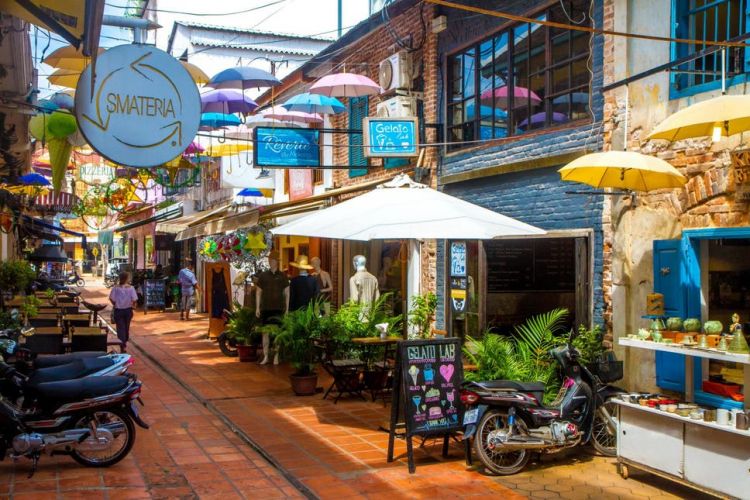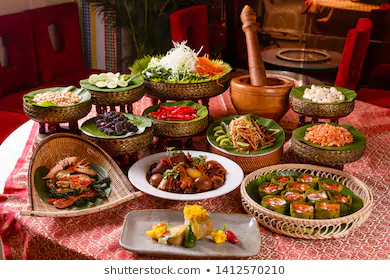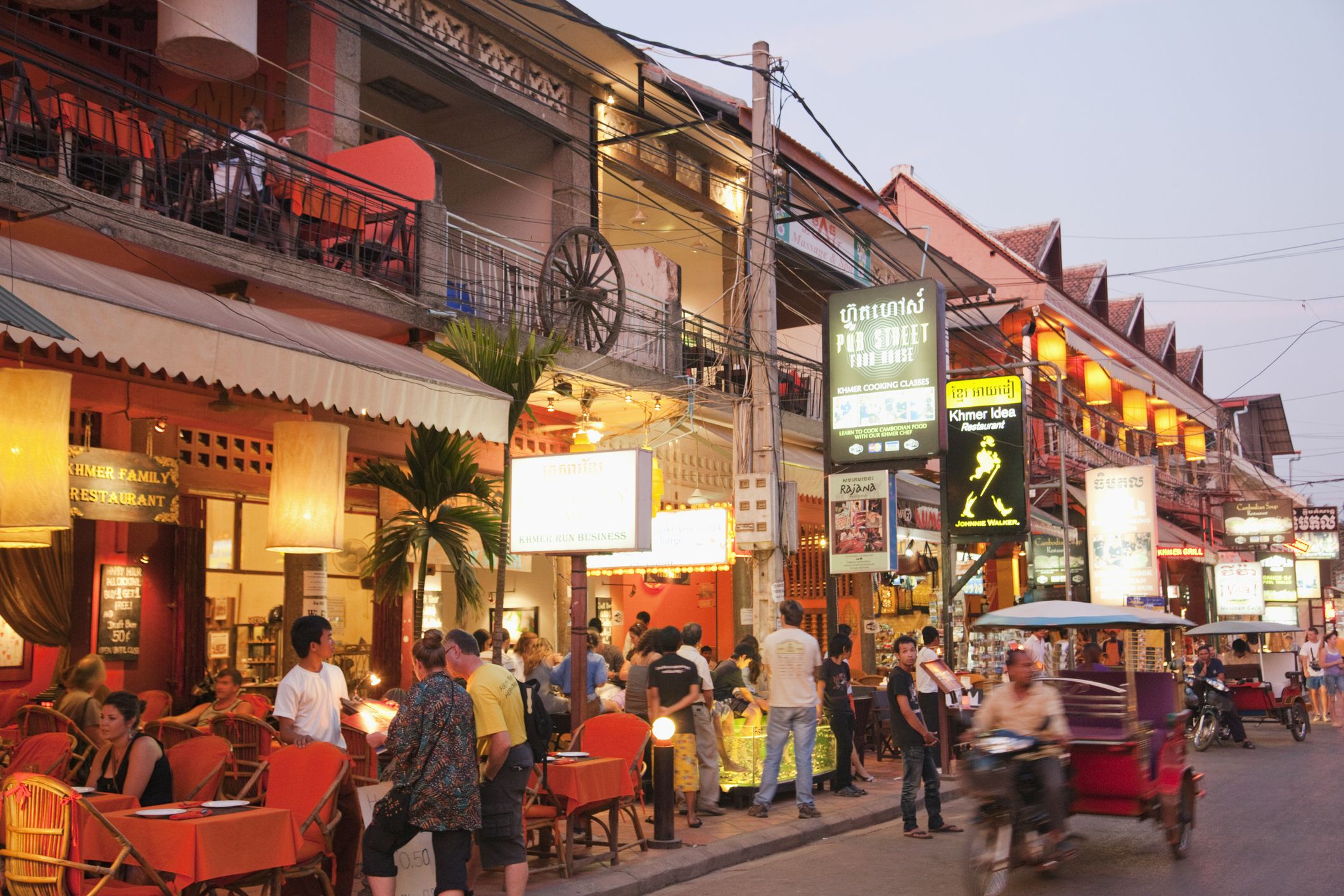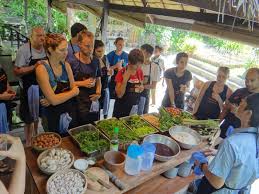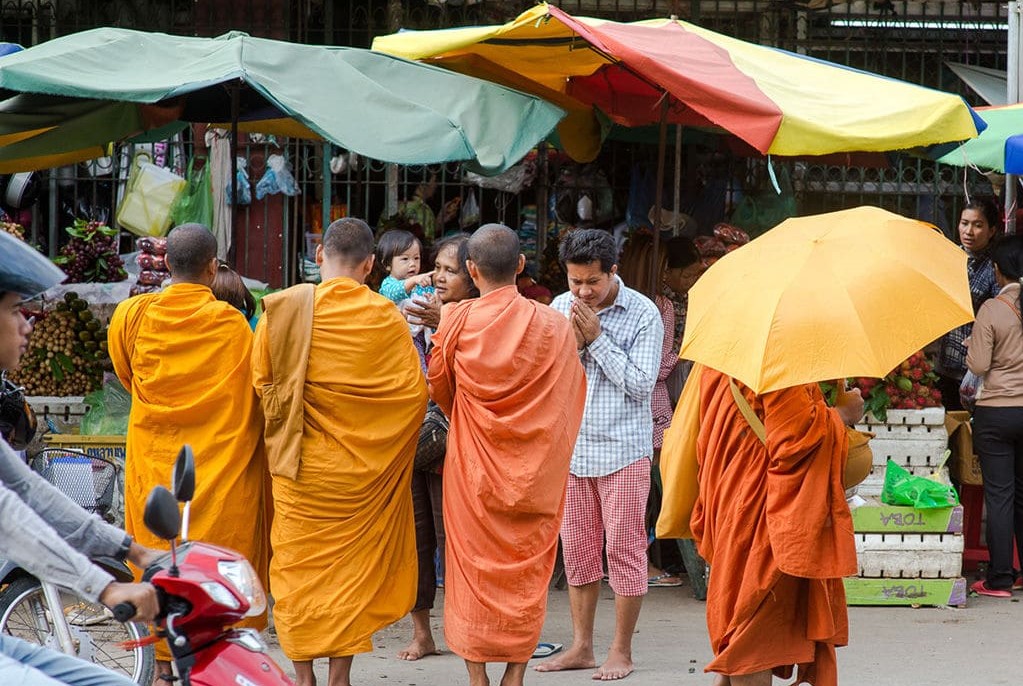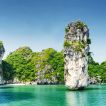Starting at the world’s largest religious temple, the magnificent Angkor Wat. Built by Suryavarman II in the early 12th century, it was constructed following the model of the temple mountain, symbolizing Mount Meru, home of the gods. Continue to the ancient city of Angkor Thom; the last capital of the Great Khmer Empire under the reign of Jayavarman VII and is surrounded by an 8m high wall drawing a perfect square. Enter the city from the impressive stone South Gate, carved with elephants and four giant faces. Continue our journey to Bayon temple in the center of the city. This 12th century masterpiece is distinguished by its dozens of towers with enigmatic faces looking out over the widespread provinces of the Great Khmer Empire, however, Bayon is of special interest to us for its galleries of bas-relief carvings featuring scenes from daily life that tell us much about the culinary culture of the Khmers during the Empire. Also visit the Terrace of the Elephants and Terrace of the Leper King for more intricate bas-reliefs and stroll the grounds of the former Royal Palace to discover small hidden temples that are rarely visited. Back to your hotel to freshen up before stepping out for further exploration. In the afternoon, visit the magical Ta Prohm temple, built in the mid-12th to early 13th centuries. Ta Prohm is unique in that it is overgrown by jungle, trees, vines, and with many parts crumbling to the ground, it is one of the most picturesque Angkor temples. Alternatively, depending on the season and the crowds, you may wish to visit Preah Khan temple. Built by the same king in a similar style, this larger temple complex is also largely left in ruins and its labyrinthian layout and fewer visitors makes a more intimate experience even in the high season months. This evening, be picked up at the hotel by local transportation at 18:00 for a Cambodian Street Food Discovery. Explore the streets around Psar Chas (Old Market), which are lined with various stalls selling pancakes, fruit shakes, fried bananas, waffles, coconut rice cakes, and various fried rice and noodle dishes. Sit down anywhere and enjoy anything at leisure! Make sure to stop at one of the many fresh fruit stalls to try a range of exotic local fruit, including dragon fruit, longans, mangoes, mangosteens, snake fruit, and the pungent but very tasty durian! Then, head over to the Sombai rice wine workshop to sample a selection of spirits made from fermented rice. Taste the unusual concoctions infused with local fruits and herbs, accompanied by local snacks. This is a great break of the culinary adventure!Continue the culinary adventure around Wat Damnak, where a handful of smoke-filled corrugated-iron roofed shacks and fancier open-sided eateries serve one of Siem Reap’s most popular street food snacks, sach ko ang jakak (beef skewers marinated in palm sugar, soy, and kroeung (a paste of lemongrass, galangal, turmeric, kaffir lime, garlic), and then barbecued over coals on a traditional clay grill). There are other meats available too like BBQ frog, eel, chicken, or fish. End the evening at one of the family-run dessert stalls near Wat Polanka. Combining a myriad textures, from silky glutinous surfaces and crunchy shaved ice to smooth medicinal jellies and creamy coconut milk, and flavours that are exotic to foreign palates, from yellow bean to durian, Khmer desserts are an acquired taste for many visitors. This stop will mark the end of the tour. Be driven safely back to the hotel, or dropped off at anywhere in the city center of Siem Reap. Overnight in Siem Reap.


